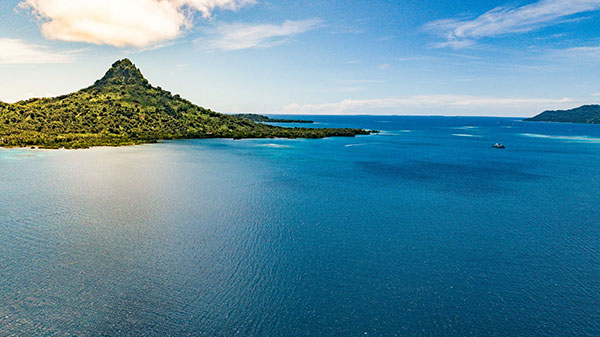 About Chuuk
About Chuuk
Chuuk's rich and colorful history, its dynamic culture, and spectacular oceanic beauty take center stage, if you are to better understand the people and their island. Virtually everything you experience in the five island groups is somehow linked to the cultural past; the ocean environments of today weave the lore and pageantry of yesteryear.
The question of Chuukese origin has yet to be answered to the satisfaction of historians, archaeologists, and anthropologists. Recent archaeological evidence indicates that Chuuk (prior to the 1980s, the islands were either called Ruk or Truk) was settled during the beginning of the first millennium by Malay-Polynesian seafaring peoples. These were true pioneers and explorers who sailed in large canoes from either the eastern Yap Islands, or from the Marshall Islands to the west. Only archaeology and legends can tell us what actually happened in the past since there was no written language until American missionaries arrived in the late-19th century. The rich oral traditions say Chuukese flourished as an advanced fishing and seafaring society, using the sea to harvest a bountiful and varied supply of food and as a highway to destinations unknown. Plants were used to cure the sick, and chants appeased the gods.
A modern understanding of past (and present) Chuukese navigation and canoe building indicates that seafaring techniques were complex; navigators possessed special knowledge and were given a high social status. These men were tough and fearless, and often fought in hand-to-hand combat -- using the art of pwaang -- aboard their vessels.
